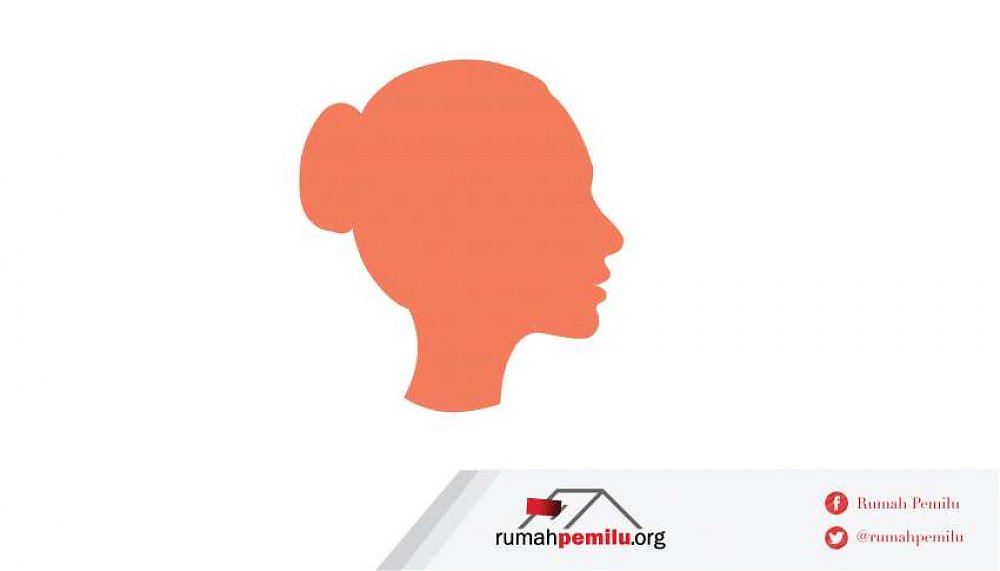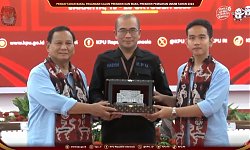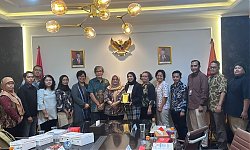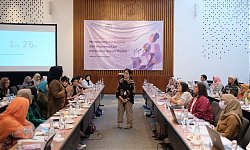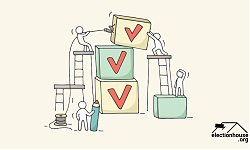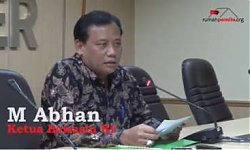Political violence against women is increasing in most countries of the world and occurs throughout the region. The targets are not only candidates or politicians, but also supporters, activists, government officials, and even voters. Since 2020, Mexico, Colombia, China, India, Brazil, Burundi, Myanmar, Afghanistan, Philippines, and Cuba have been the most violent countries against women participating in political activities.
The results of the Inter-Parliamentary Union (IPU) study in 2016 showed 81.8 percent of women MPs surveyed from around the world had experienced psychological bullying, such as their presence was not considered important, their opinions were not taken seriously, they are not even given the same speech time as male MPs. In the Philippines, Senator Leila de Lima was called an immoral person and adulterer by President Rodrigo Duterte because Leila criticized Duterte's leadership.
Also, look at 2019 The Armed Conflict Location & Event Data Project (ACLED) Survey which showed that 2 percent of female voters had experienced physical violence when registering as voters or after voting. One such case occurred on January 14, 2019, a village in Masisi, Congo, was attacked by the militant groups Nduma Defense of Congo (Renové) and the Alliance of Patriots for a Free and Sovereign Congo (APCLS) on charges that villagers voted for the wrong candidate. In the attack, two women were raped.
Political violence continues and increases. This happened in line with the increasing number of women involved in political activities.
What exactly is violence against women in politics?
The United Nation in "Violence against women in politics" (2014) defines violence against women in politics as violence that occurs in the political sphere, which specifically targets women. Violence is used to strengthen traditional, social, and political structures by targeting women leaders who oppose patriarchy and prevailing social expectations and norms. This violence limits women's mobility and capacity to participate in politics, which is very likely to result in physical, sexual, or psychological misery or suffering for women politicians. Coercion, as well as arbitrary deprivation of freedom in the public or private life of women politicians, are also included in the category of violence against women in politics.
Mona Lena Krook and Juliana Restrepo Sanín in their study essay entitled “Violence Against Women in Politics. A Defense of the Concept” (2016) maps the concept of violence against women in politics on the motives behind the violence. The verification question is: did the violence aim to send a message to women also to society that women as a community group should not participate in politics.
If the explanation is simplified, it becomes political violence against women if women politicians experience violence because they are women. Because they target women, women face danger in spaces normally safe for men, such as political gatherings, official events, offices, and even their own homes.
Krook and Sanín gave an example that the murder of Benazir Bhutto in December 2007 was not violence against women, but violence in politics involving women politicians. Benazir was not killed because she was a woman and unfit to lead Pakistan, but because of political interests. The issue of women's rights to serve as national leaders was resolved by religious leaders before their first election in 1988.
An example of violence against women in politics can be seen in the 2012 murder case of Juana Quispe, a local councilor in Bolivia. Juana was critical of the mayor, but because Juana was a woman, she was treated badly. Juana was asked to resign by the mayor, the mayor's supporters, and many members of the local council. She was even prevented from attending board meetings and suspended as a board member. When Juana was reappointed after a seven-month trial, Juana did not get a salary on the grounds of not attending a board meeting. One month later, she was found murdered.
What happened to Juana is not a single case in Bolivia. Bolivian women politicians often experience violence in politics. It is not uncommon for female members of the council to resign in the middle of their term of office and give their seats to male party cadres.
Slightly different from the United Nation and Krook and Sanin, ACLED defines violence against women in politics as political violence that targets specifically women or girls. In its research, ACLED tracks political violence that targets women in politics (e.g. candidates, politicians, political party supporters, voters), and other women from all walks of life, regardless of their occupation or direct involvement in politics. The political violence referred to by ACLED includes threats for women to participate in political activities, such as running for or holding office, supporting, or electing political candidates, leading human rights campaigns or civil society initiatives, and so on.
The concept of violence against women in politics is relatively new, but the phenomenon of violence against women who carry out political activities has existed for a long time. In the 1950s, for example, a congresswoman from Minnesota, circulated a letter from her husband to reporters, stating that her husband was “sick and tired of [she] hanging around with other men all the time” and urging her to come home. The letter had such a bad impact on her re-election campaign, that she was not re-elected. The image of the congresswoman was damaged with the label "not a good woman who abandoned her husband". Women who choose to enter politics and leave their husbands are not liked by society.
Pulling history even further, violence occurred against women who fought for women's suffrage rights. Women activists were bullied by their neighbors, attacked by angry mobs, imprisoned, fired from work, separated from their children, even divorced by their husbands. The film Suffragette (2015) shows how massive the violence against women activists is.
In today's world, political violence against women tends to increase in the run-up to elections, especially when there are women running for office amid strong polarization. Indonesia's experience in the 2019 Election, as the results of a study by the Association for Elections and Democracy (Perludem) "Voter Suppression: Phenomena and Efforts to Overcome" (2021), a female legislative candidate and Chairperson of the Indonesian Solidarity Party (PSI), Grace Natalie, became victims of disinformation attacks with misogynistic hate speech narratives.
In 2022, a number of countries in Asia will hold elections in the midst of the ongoing Covid-19 pandemic. In the Philippines, presidential elections, senate elections, and local elections will be held simultaneously on May 9. Then, South Korea held the presidential elections on March 9. Cambodia has a commune council election on 5 June. In addition, Japan also held elections for members of the upper house, no later than July 25.
Attacks against women in elections that continue to be allowed will weaken the credibility of women as decision-makers, and at other times, will silence the voice and involvement of women in the public sphere, and further distance women from politics. []
AMALIA SALABI

